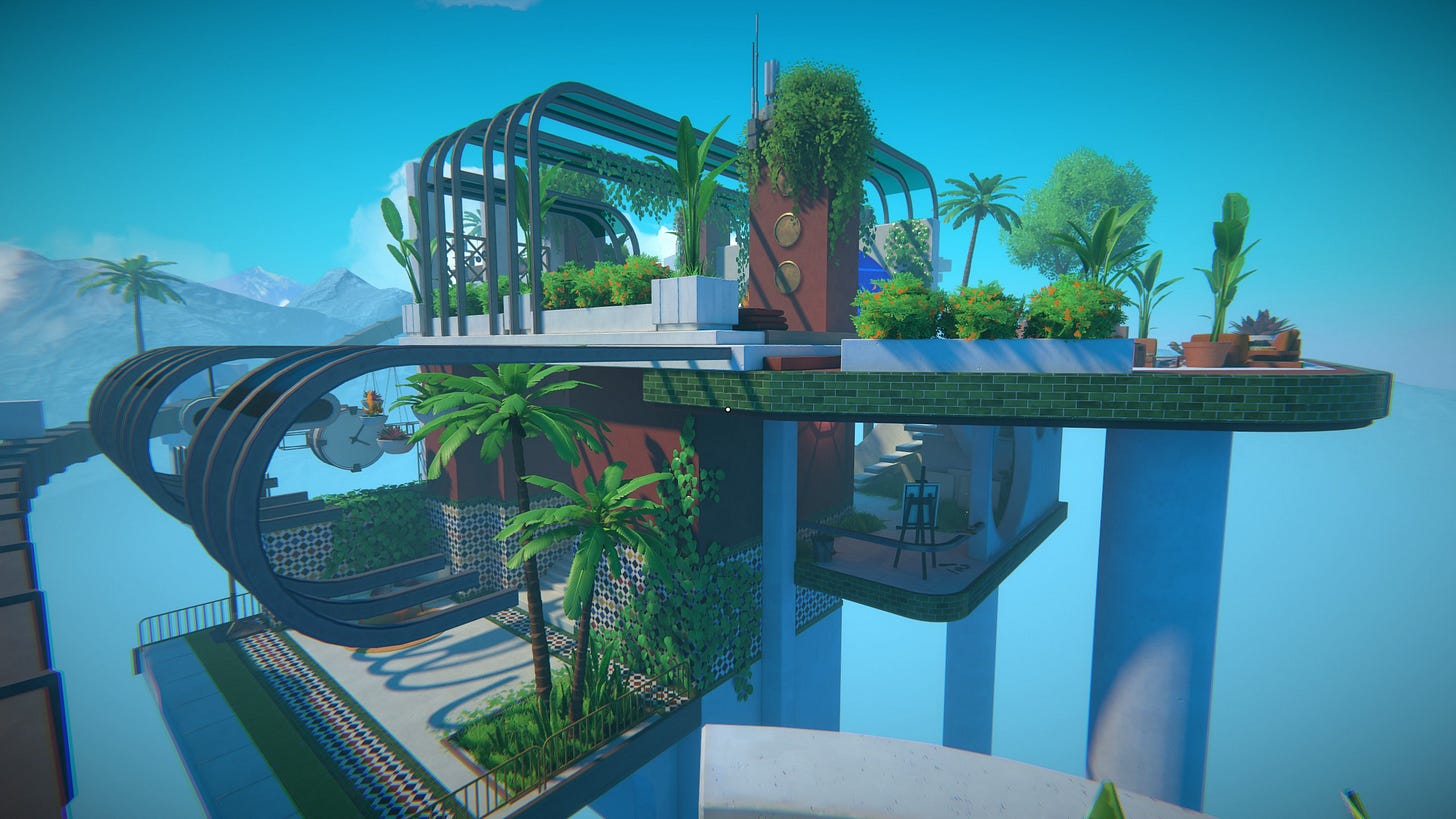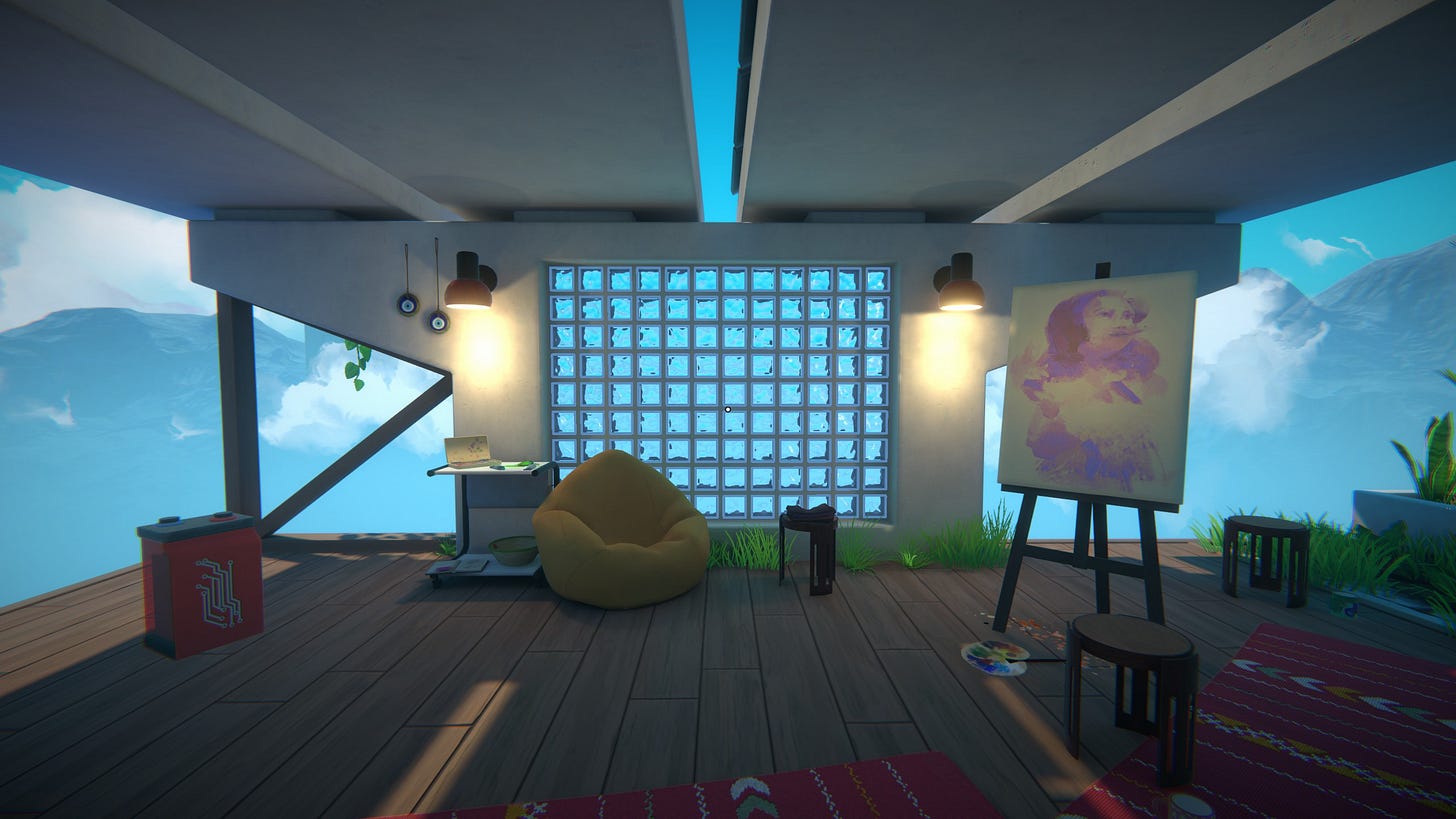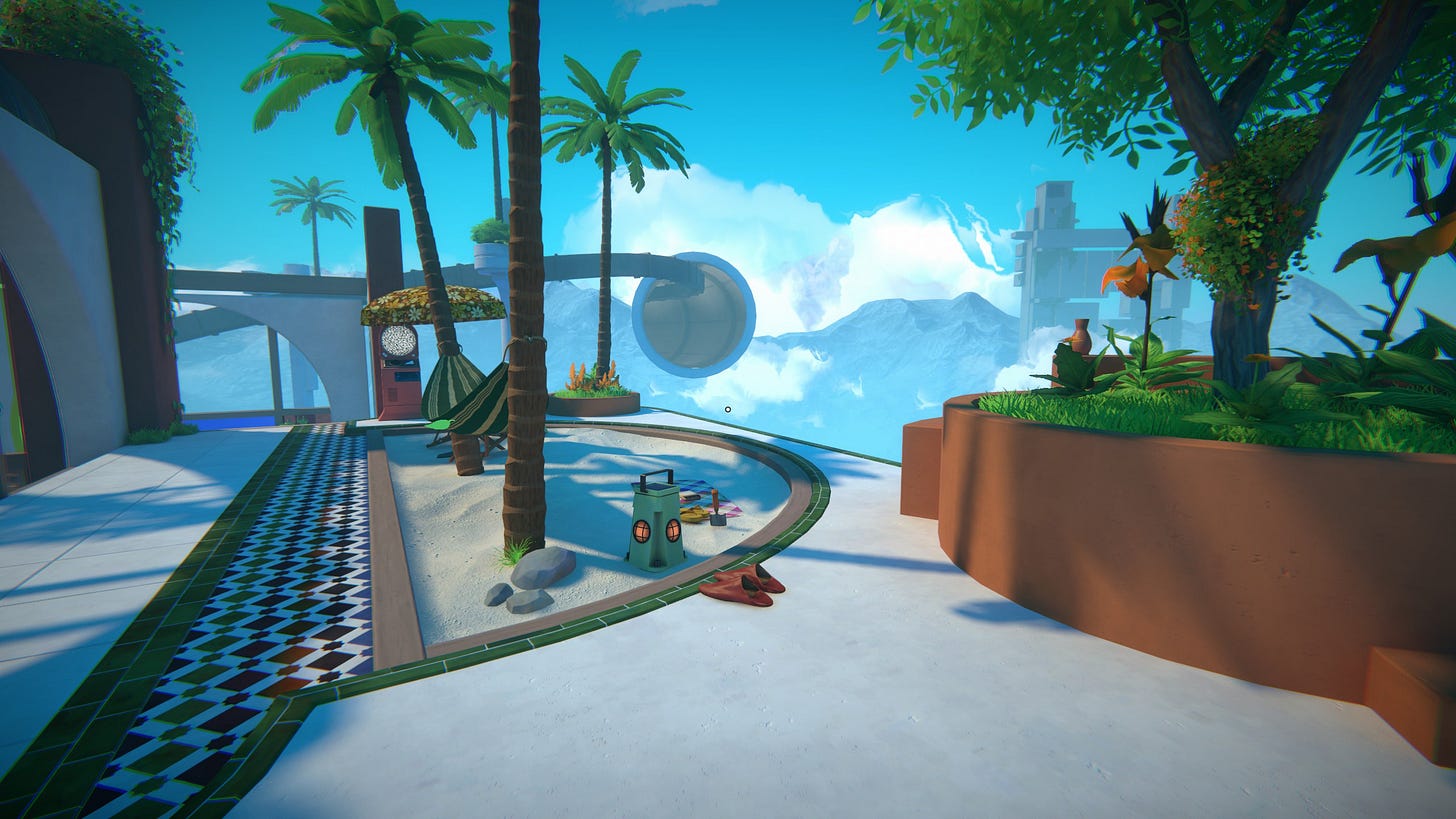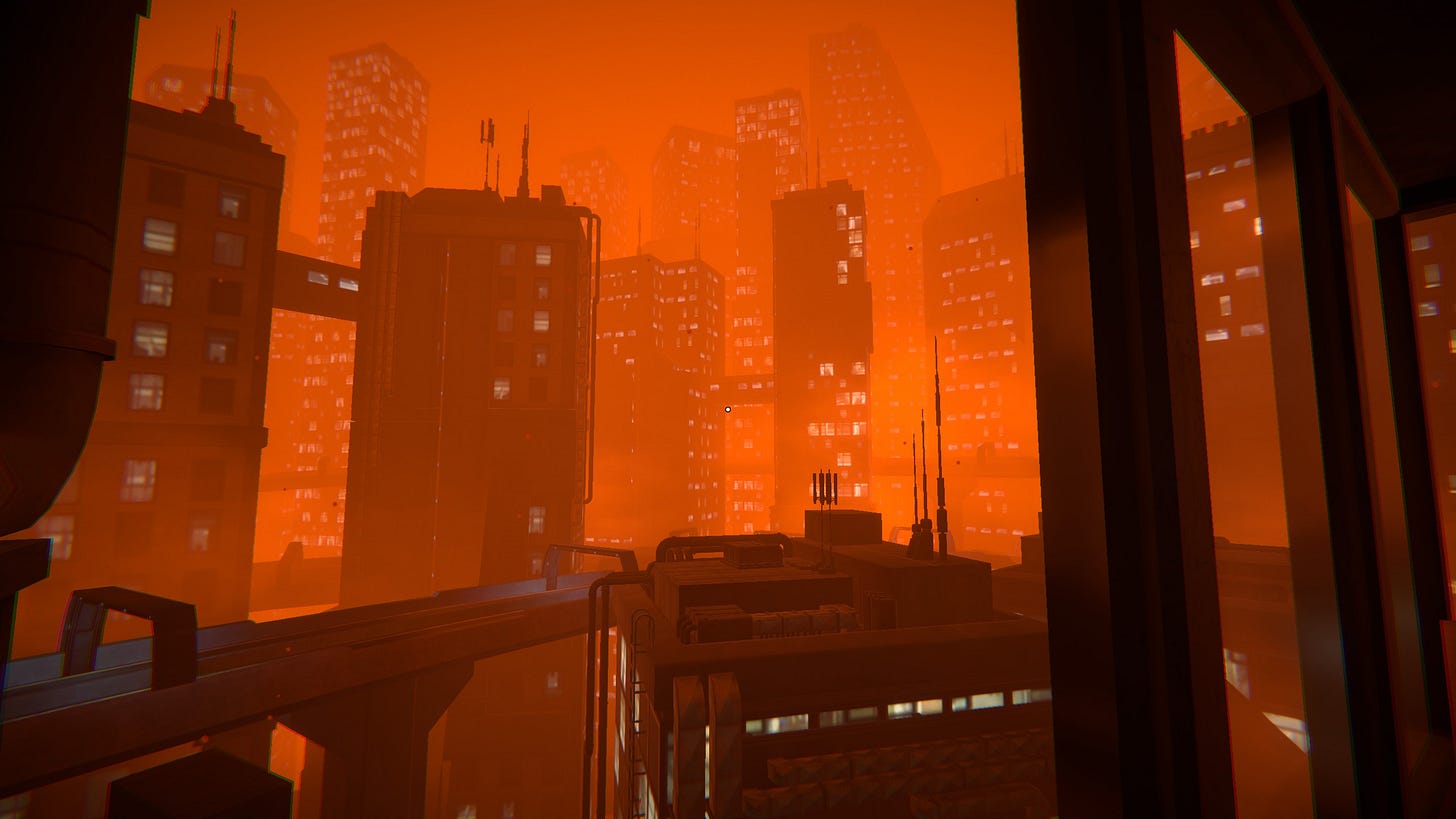Viewfinder is a puzzle game set in the far future (hopefully) on a climate change ravaged planet (guessing Earth) that uses a virtual reality simulation to recreate some scenes from a group of… randos? But here’s the cool part, you can do some crazy shit with photographs.
According to the wikipedia (I’m the research king) the developers (Sad Owl Studios) cited puzzle games like Portal as an influence. The influence of Portal has an outsized impact on the architectural and artistic expression in Viewfinder. Other games that fit the mold of puzzle games that have weird uses of architecture include The Witness and Maquette. I have a deep soft spot for these types of games, but they don’t have a great track record with creating meaningful architectural design, instead opting for coating their puzzles with a (term I invented) style wash tm. Given the unique 2D photo to 3D space, this game SHOULD have something interesting to say about architecture considering all of architecture is turning 2D drawings into 3D space.
So, how does it do?
Chapter 1
Each chapter is colored by the personality of a different member of some sort of climate change supergroup. Each of these chapters rely on a brutalist concrete backbone, an interesting decision considering the embodied energy of concrete, not that I would expect a developer to know or consider that. Unfortunately, this backbone becomes repetitive since there is almost no variation on this theme. What does change from chapter to chapter is the decor, whether that be paintings, guitars, etc.
the first chapter of Viewport is from an artists point of view. This is by far the strongest chapter of the game, especially architecturally. It’s the colorful, well designed, and well lit. There were some interesting programmatic ideas, my favorite of which was a personal beach on a rooftop like something out of MVRDV’s Rooftop Catalogue.
The lighting is deeply fascinating. It takes cues from contemporary phenomenology movements in architecture. The borrowed light feels fresh, expansive, and emotional as if an early Steven Holl project was the inspiration.
One of the technological innovations in this area is that introduction of non-photograph images. 2D images not only cut through the 3D space like previous photographs, but it carries the style of the image as well. The theme of the images are so thoroughly thought through that sounds are crafted to match the style (my favorite is the jump sound “boing” in the cartoon). The sound designer of Viewfinder needs to be recognized for a masterful achievement.
At one point when doing one of the more clever puzzles the walls break in the illusion as part of the story. A Blade Runner 2049-esque dystopian nightmare awaits. It’s thematic and impactful, but such an interesting world is so briefly explored that it feels like something more that was eventually cut.
The rest of the Chapters
For some reason rest of game felt quickly pieced together without the same sort of love and attention to detail as Chapter 1. Despite some cool references to video games there really wasn’t as much depth. There were also some really fun De Stijl references, but these cameos felt like a distraction from the standard game outlasting its welcome.
Ending
Viewfinder ends in a similar way to many of these types of emotional and mysterious puzzle games. It creates a final series of levels that slightly alter your powers as the world is collapsing and the illusion is being broken. Ultimately the stakes just seem so low that I couldn’t fully comprehend why everyone was being so dramatic in the story we discovered. Like someone was being selfish so the 4 people that set out the save the world from climate change ended up failing their experiment? Maquette did a similar thing to a much more successful emotional payoff. In Maquette the stakes were so high because the player was experiencing the blossom and collapse of a romantic relationship (think scenes of a marriage) and at the end as the city looms and encloses and the main character is experiencing deep depression and trauma, hope blooms. In Viewfinder you find a seedling and “hooray the world is saved” but why couldn’t the first group just do it? Seemed like they knew what was going on. Anyway, the architecture is nice to look at, but it didn’t do much more than that.













